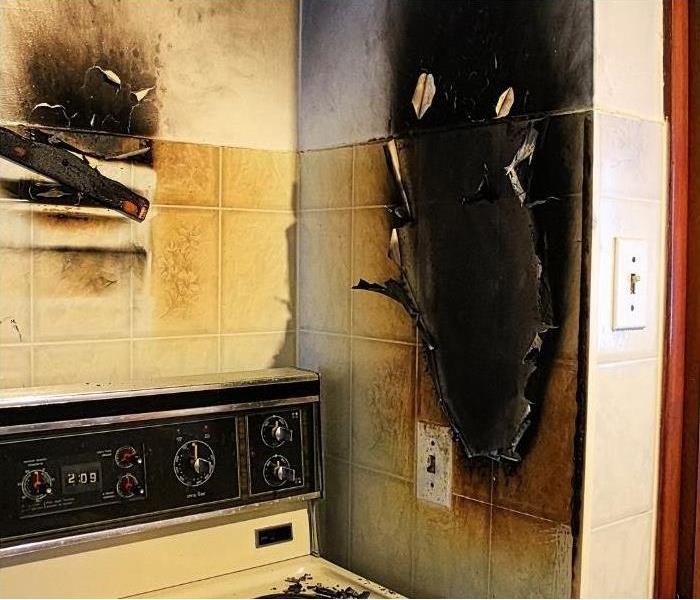Cleaning Up After a House Fire
4/19/2022 (Permalink)
After a homeowner experiences a house fire, cleaning ash and soot residues becomes essential to get a home back to normal once the initially damaged belongings are addressed or disposed of. Smoke created by a fire fills the house and leaves behind not only an odor but residue that’s difficult to clean. Soot residues discolor and ruin contents and materials inside your house, which is why it’s important to focus on ash and soot cleanup after a home fire and get professional help doing so.
Deciding to replace or clean damaged items
Replacing items inside your home can get expensive, so cleaning items instead can save you money if it’s a feasible option. SERVPRO's fire damage technicians in Phoenix use a variety of approaches to clean during the fire mitigation process, depending on what is damaged by soot and smoke. The purpose of cleaning smoke-related damage is to restore the materials to the conditions they were before the fire whenever possible. Depending on the items, some cleaning methods work better in certain situations than others. The type of cleaning used depends on the kind of materials that got burned and the type of materials soot damaged. SERVPRO professionals are well-versed in cleaning such items and the best approach to take.
Fundamentals of cleaning damaged items
There are a few fundamental elements required to address residues so that they get removed effectively. The first component of cleaning is temperature. Heat increases the speed of chemical reactions in products. SERVPRO's fire restoration technicians know how to select the best temperature based on which chemical gets used and the material being cleaned. The next component is agitation. When soot-damaged materials get disturbed, the residues get dislodged, and chemicals get distributed across the surface which can make it easier to clean. When cleaning smoke-damaged surfaces, we agitate the surface with towels, brushes, air and water pressure, and sonic vibrations from ultrasonic machines. Soot residues also get cleaned through chemical action. Most chemicals are constructed to cause a reaction with the soot, therefore assisting in soot removal. The reactions that take place include dissolving, emulsifying, oxidizing, bleaching, and digesting. The last component of cleaning is time. Most chemicals need time to effectively react to the soot. The amount of time needed varies based on the product, type of residue, and the kind of surface affected by soot. Our techs know this and know how to leverage time to their benefit for the best results.
Call SERVPRO if you experience a house fire
In most situations, smoke and soot get removed the best by using a variety of approaches to cleaning. For professional help with cleaning residues call SERVPRO of Central Phoenix at (602) 386-4268 any time of the day. Our technicians will strive to restore all your possessions to pre-fire conditions to help you recover from the disaster of a house fire.






 24/7 Emergency Service
24/7 Emergency Service